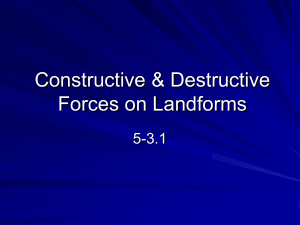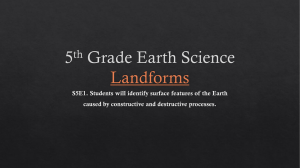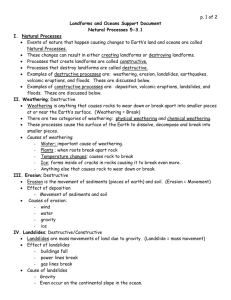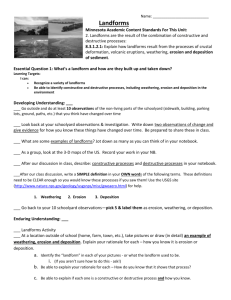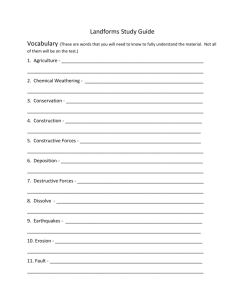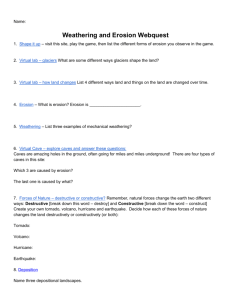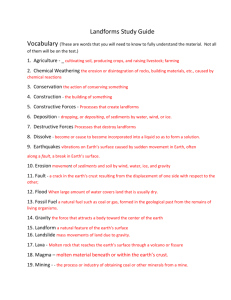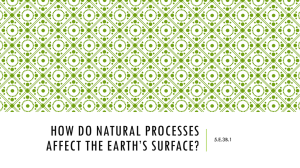Constructive & Destructive Forces on Landforms
advertisement
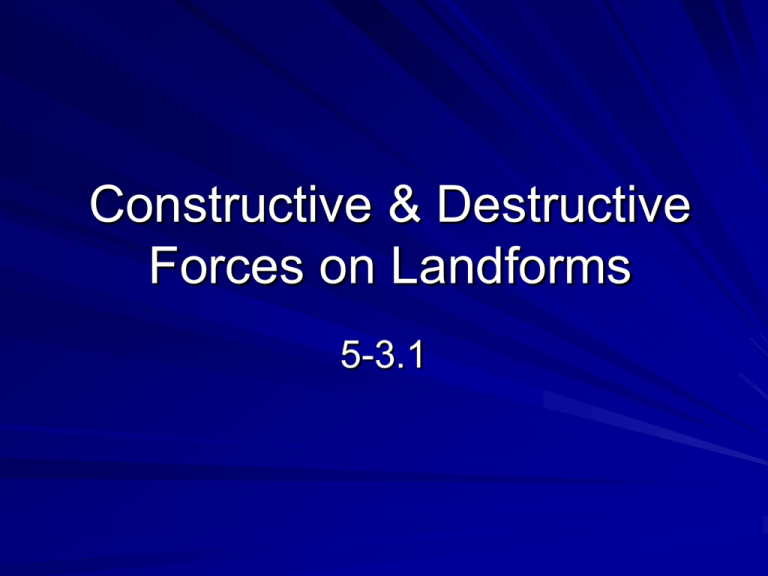
Constructive & Destructive Forces on Landforms 5-3.1 Two Types of Forces Destructive Forces: processes that destroy landforms. – 2 types: Slow (weathering) and Fast (Erosion) – Ex. landslides, volcanic eruptions, earthquakes, floods Constructive forces: forces that build up an existing landform or create a new one. – Caused by: water, gravity, wind and glaciers. – Ex: deposition, landslides, volcanic eruptions, floods Weathering Weathering Pictures Weathering: a slow, destructive force that breaks rocks into smaller pieces called sediments. Can by physical (mechanical) or chemical. Keywords: wear down, break apart Mechanical weathering: the breaking of rock into smaller pieces by forces due to gravity, ice, plant roots, or other physical forces. Chemical Weathering: the changing of materials in a rock by chemical processes. Grand Canyon Video Erosion Erosion: the destructive movement of materials away from one place by wind, water, ice and gravity. Wave Erosion- caused by water Wind Erosion (Dust Storm) Landslides Landslides: occur when gravity quickly pulls rock and dirt downhill. Floods Floods: a great flow of water over an area that is usually dry land. Volcanic Eruptions Volcano: an opening in the Earth’s crust through which steam, lava and ashes erupt. Cause both destructive and constructive changes to landforms. Mount St. Helens Mount St. Helens Video Saint Helen’s Before Saint Helen’s After Volcanoes can be constructive, but also destructive… Earthquakes Earthquakes: the shaking of Earth’s surface caused by the release of energy along a fault. San Andreas Fault, California Volcanoes & Earthquakes Tectonic Plates, Volcanoes & Earthquakes Erosion & Deposition Deposition: the placing of materials in a new place (constructive force). Ex. Sandbars Water Erosion & Deposition River DeltaDeposits of sediment at the mouth of the Mississippi River creating new land called a delta. Wind Erosion & Deposition Sand Dunes- sand is moved by wind Desert Sand Dunes Ocean Sand Dunes
